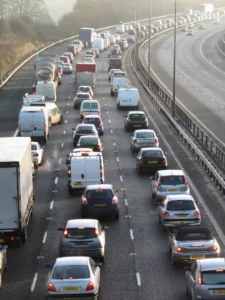The condition of local roads in England is declining, the repair backlog is growing and the DfT doesn’t have a grasp on the situation, says a damning new report.
The National Audit Office (NAO) investigated the state of England’s 183,000-mile local road network, and examined whether the DfT is ensuring value for money through maintenance and supporting local authorities. The results are not encouraging.
The NAO concluded that the “DfT does not have a good enough understanding of the condition of local roads, and does not use the limited data it does have to allocate its funding as effectively as possible. It does not know whether the funds it allocates are delivering improvements in road condition, and has not updated its guidance to local authorities, to share good practice and help them make the most of their limited funds, for some years,” says Heycar.
Unsurprisingly, the main issue is potholes, with an estimated 1.9 million of them filled in England during 2023-24, according to a survey by the Asphalt Industry Alliance trade body, which also suggested that the cost to empty the backlog of outstanding pothole repairs would be £15.6 billion.
The NAO report found that less than half (48%) of England’s roads are in a “good structural condition”, with 35% classed as adequate and 17% as poor. Maintenance levels have been falling since 2017.
The local road network in England represents 98% of tidal roads, and includes pavements, bridges and drainage systems as well as roads themselves. The DfT itself says poorly maintained roads can be dangerous, increase congestion and journey times and dissuade cycling and walking.
Some 62% of the road network is made up of unclassified roads, for which there is no requirement for authorities to report their condition, meaning the DfT lacks information on them. There’s no data collected on footways, cycleways or bridge conditions, either.
The lack of data held by the DfT means it can’t properly understand how or if the funding it provided for local road maintenance actually improves their condition.
In addition, the increasing backlog in road maintenance work means local authorities don’t have the resources to do preventative work that could work out as better value in the long run. Funding from the DfT to local authorities is increasingly short term, and costs of road maintenance has risen, which means much of the work carried out is reactive rather than preventative – they’re spending too much time fixing existing problems rather than stopping the problems happening in the first place.
Long-term funding does exist – some £8.6 billion was announced by the DfT for local roads maintenance in October 2023 – but it’s not been allocated yet.
(Pic – RAC)






















